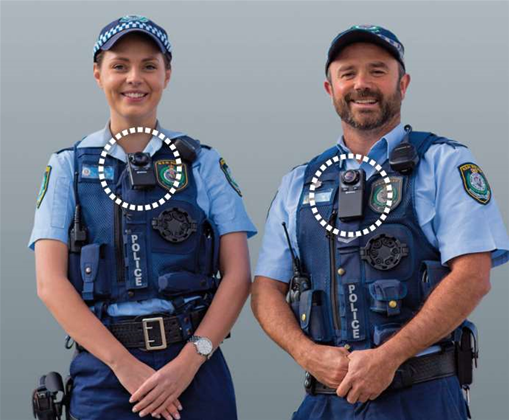A $100 million cash splash to equip frontline police officers in NSW with new technology was “potentially a missed opportunity” and could have better addressed organisation-wide capability gaps, the state’s auditor-general has found.

An audit [pdf] of the ‘policing for tomorrow’ fund, released earlier this month, reveals that while NSW Police’s management of the initiative was “mostly effective”, some investment could have better targeted capability gaps.
The fund, which was announced by the state government in the lead up to the March 2015 election, allowed the force to equip the state’s more than 17,000 sworn officers with the latest technology.
It was used to purchase 4800 shared body-worn video (BWV) cameras and over 4600 shared MobiPol mobile devices, which account for $58 million of total cost of the fund, as well as mobile fingerprint scanners and mobile drug testing devices.
A number of other projects focused on improving frontline policing were also financed over the four-year life of the fund, though the force was given the discretion to pick and choose what projects were funded.
At around $25 million each year for four years, the fund represented just a fraction of NSW Police’s yearly IT budget.
The force currently spends around $200 million on IT operating costs and $74 million of its capital expenditure budget on IT projects each year.
Like the IT investment process taken by the force more generally, the audit said IT investment decisions were informed by “proposals developed and presented to it, rather than being driven by broader strategy”.
“Commands identify their individual technology needs and submit requests to the ICT executive board for consideration and prioritisation,” the audit states.
“Soon after the 'policing for tomorrow' announcement, the NSW Police Force executive determined that a similar method would be used to determine funding for projects from 'policing for tomorrow' as for ICT projects generally.
“The NSW Police Force framed additional eligibility criteria for the funding directly from the election announcement, which emphasised technology for frontline officers rather than enabling technology.”
The audit said that broader strategic directions such as the 2014 enhanced mobile policing strategy were also taken into account by governance bodies.
But the audit found a “strategic whole-of-organisation approach to identifying and filling technology capability gaps may have assisted in better targeting funds and managing expected benefits”.
“The NSW Police Force missed an opportunity to take a whole-of-organisation approach to selecting technology projects for the remainder of the funds where it had discretion,” it said, noting the
“This may have included considering less obvious back office technology or making different investment decisions driven by gaps in the agency’s technology capabilities.”
The audit said the force “operates with significant legacy ICT systems and faces challenges in investing in the next generation of ICT assets that meet its needs”.
“Various iterations of ICT strategic plans note this context and identify the importance of investing in enabling technology to support operational policing,” the report states.
“None of the funded 'policing for tomorrow' technologies originally planned to address this.”
The audit did, however, acknowledge that NSW Police was able to “take advantage of some enterprise-wide opportunities as they arose during the 'policing for tomorrow' funded projects” such as with the archival system needed to store BWV footage.
The force is now in the process of “developing and implementing a capabilities approach to ICT investment that will consider policing outcomes - and the people, processes, information and technology capabilities necessary and available across the organisation to achieve these”.
“This should strengthen the identification and acquisition of priority technology in the future,” the audit states.
The audit also notes that NSW Police was effectively forced to surrender $14.7 million in recurrent expenditure because it did not spend the funding in the allocated period.
The government “declined to extend additional permanent funding” in the 2019-20 financial year following a budget proposal from the force to use funding to support BWV and MobiPol.
The unspent recurrent funds are now expected to be “carried forward to the 2020-21 financial year pending a review of policing for tomorrow funds to date”
“The NSW Police Force is now meeting ongoing recurrent needs for MobiPol ($8.8 million) and BWV ($3.9 million) from existing resources,” the audit states.
“The NSW Police Force plans to seek ongoing funding in addition to leftover 'policing for tomorrow' funds to meet these costs in the future.”
The force was, however, successful in carrying forward $5.7 million in unspent capital expenditure from the fund to the 2019-20 year.
Many other states have now surpassed NSW Police’s efforts on the mobility front, including Western Australia which rolled out an initial 4500 mobile devices in just two months last year and are now rolling out a further 2000.


_(20).jpg&h=140&w=231&c=1&s=0)








 iTnews Executive Retreat - Security Leaders Edition
iTnews Executive Retreat - Security Leaders Edition












_(1).jpg&h=140&w=231&c=1&s=0)



